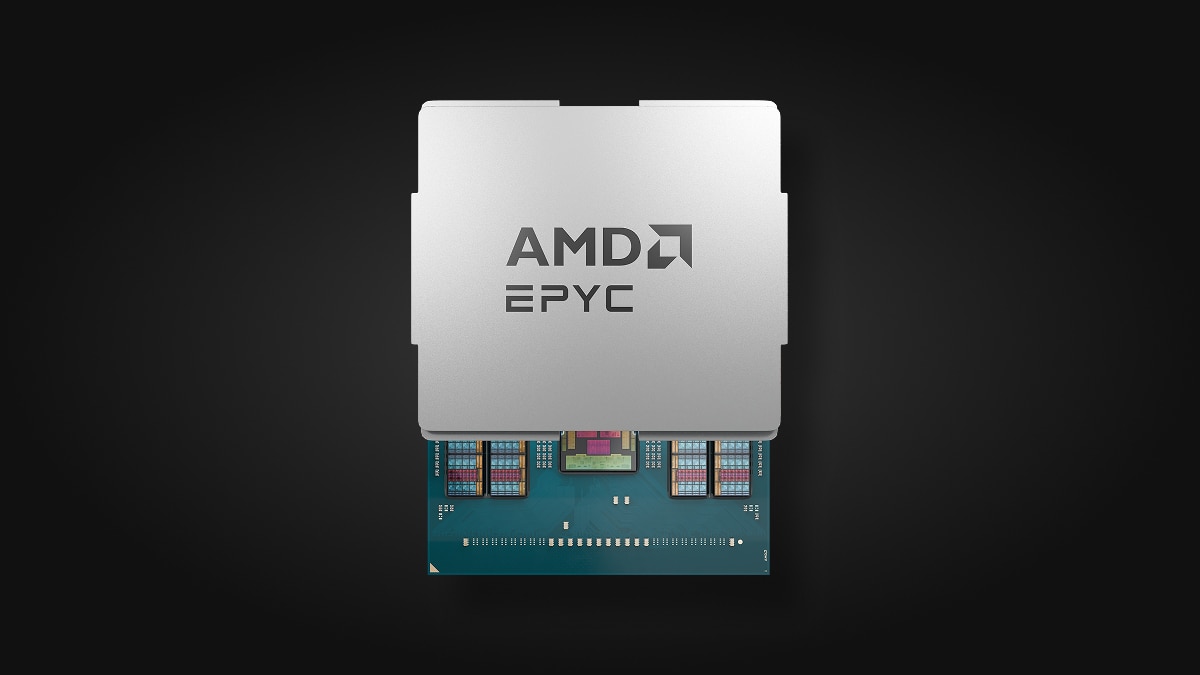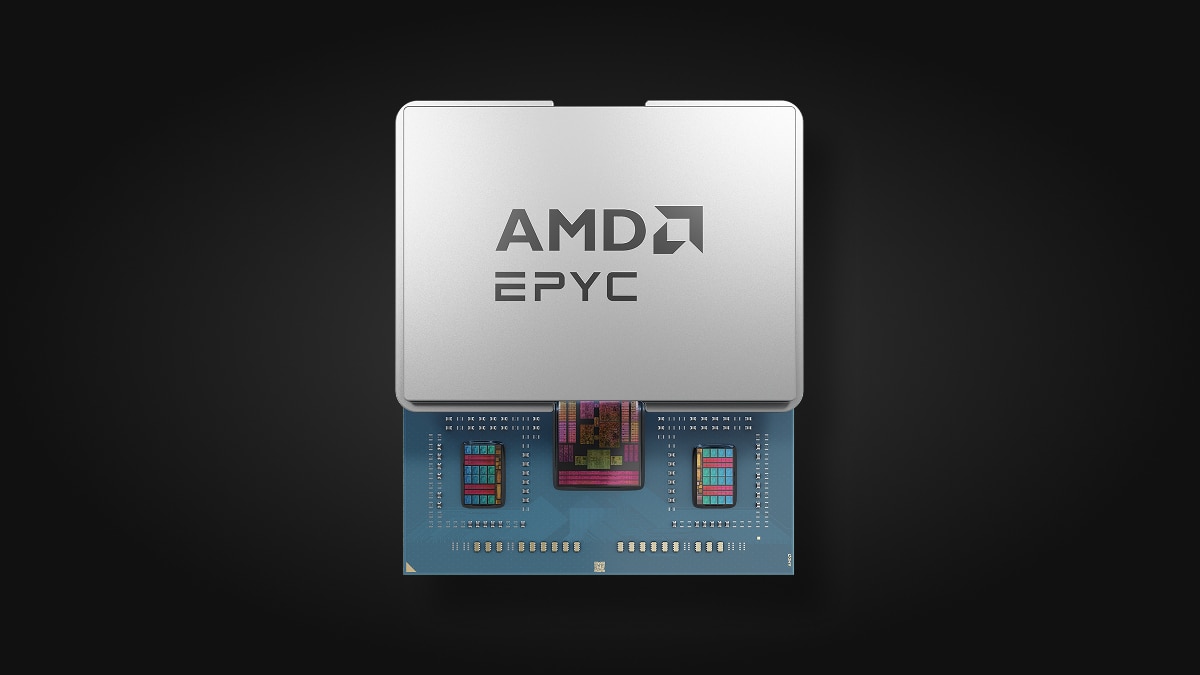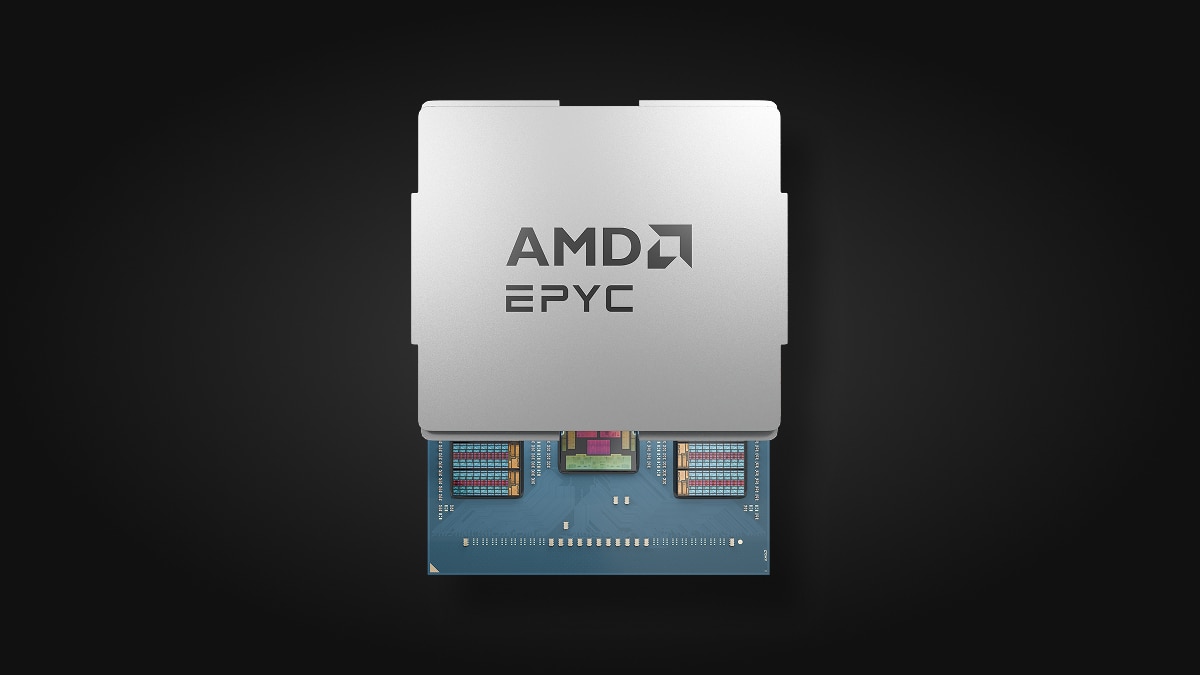

The Ideal Foundation for Your Virtualized Infrastructure
Facing rising IT costs, increasing business demands, and the need for AI capabilities?
AMD EPYC™ processors offer a solution for virtualized infrastructure. Their diverse portfolio provides options optimized for performance, power efficiency, or high core density to help reduce data center footprint. Trusted by major enterprises and cloud providers, EPYC processors benefit from strong partnerships with virtualization leaders like VMware®, Red Hat®, and Nutanix™, enabling seamless integration and support for a scalable, future-ready IT foundation.


Modern Infrastructure, Measurable Impact
2P EPYC 9575F vs. 2P Intel Xeon 6252 to deliver 28700 integer performance1
2P EPYC 9965 vs. 2P Intel Xeon 8280 to deliver 39100 integer performance2

Use Cases
Private and Hybrid Cloud
AMD EPYC™ processors deliver the performance and scalability enterprises need to build seamless private and hybrid cloud environments. Whether extending workloads across on-prem and public cloud or modernizing legacy infrastructure, EPYC provides the consistency and efficiency to power flexible, reliable hybrid strategies.
Cloud Native
Designed for modern, containerized applications, AMD EPYC™ enables cloud-native infrastructure with high core counts, fast memory bandwidth, and strong performance per watt. It's the ideal platform for orchestrated environments like Kubernetes, microservices, and DevOps pipelines.
Hyperconverged Infrastructure (HCI)
EPYC CPU-powered systems deliver the compute, storage, and networking performance needed for scalable, resilient HCI deployments. With deep integration across leading platforms like Nutanix and VMware vSAN™, AMD EPYC simplifies infrastructure while maximizing efficiency and density.
Virtual Desktop Infrastructure (VDI)
AMD EPYC™ processors support dense, responsive VDI environments—whether for knowledge workers or high-end 3D visualization. Deliver a consistent end-user experience while optimizing cost and energy efficiency.
Right-Sized Solutions for Every Environment

Performance-Optimized
EPYC 9005 Series for intensive, high-throughput virtualized environments.

Power-Efficient
EPYC 8004 Series for edge and power-constrained data centers.

Density-Focused
High core count models ideal for VM and server consolidation.
Case Studies


Partners




Solutions




Footnotes
- 9xx5TCO-011 This scenario contains many assumptions and estimates and, while based on AMD internal research and best approximations, should be considered an example for information purposes only, and not used as a basis for decision making over actual testing. The Server & Greenhouse Gas Emissions TCO (total cost of ownership) Estimator Tool compares the selected AMD EPYC™ and Intel® Xeon® CPU based server solutions required to deliver a Target Performance Metric of 28700 units of integer performance as of April 10, 2025. This estimation reflects a 5 year time frame. Only power costs and software license costs contribute to OPEX. This analysis compares a 2P AMD 32 core EPYC_9375F powered server with a SPECrate2017_int_base score of 1010 (https://spec.org/cpu2017/results/res2024q4/cpu2017-20241105-45389.pdf) compared to a 2P Intel Xeon 32 core Platinum_8562Y+ based server with a SPECrate2017_int_base score of 729 (https://spec.org/cpu2017/results/res2024q2/cpu2017-20240530-43623.pdf) versus legacy 2P Intel Xeon 24 core Gold_6252 based server with a SPECrate2017_int_base score of 287 (https://spec.org/cpu2017/results/res2019q4/cpu2017-20190916-18249.pdf). Calculator. For additional details, see https://www.amd.com/en/legal/claims/epyc.html#q=9xx5TCO-011. ()
- 9xx5TCO-001C This scenario contains many assumptions and estimates and, while based on AMD internal research and best approximations, should be considered an example for information purposes only, and not used as a basis for decision making over actual testing. The AMD Server & Greenhouse Gas Emissions TCO (total cost of ownership) Estimator Tool - version 1.12, compares the selected AMD EPYC™ and Intel® Xeon® CPU based server solutions required to deliver a TOTAL_PERFORMANCE of 39100 units of SPECrate2017_int_base performance as of October 10, 2024. This scenario compares a legacy 2P Intel Xeon 28 core Platinum_8280 based server with a score of 391 versus 2P EPYC 9965 (192C) powered server with an score of 3000 (https://www.spec.org/cpu2017/results/res2024q4/cpu2017-20240923-44837.pdf) along with a comparison upgrade to a 2P Intel Xeon Platinum 8592+ (64C) based server with a score of 1130 (https://spec.org/cpu2017/results/res2024q3/cpu2017-20240701-43948.pdf). Actual SPECrate®2017_int_base score for 2P EPYC 9965 will vary based on OEM publications.
Environmental impact estimates made leveraging this data, using the Country / Region specific electricity factors from the 2024 International Country Specific Electricity Factors 10 – July 2024 , and the United States Environmental Protection Agency 'Greenhouse Gas Equivalencies Calculator'.
SPEC®, SPEC CPU®, and SPECrate® are registered trademarks of the Standard Performance Evaluation Corporation. See www.spec.org for more information.
For additional details, see https://www.amd.com/en/legal/claims/epyc.html#9xx5TCO-001C
- 9xx5TCO-011 This scenario contains many assumptions and estimates and, while based on AMD internal research and best approximations, should be considered an example for information purposes only, and not used as a basis for decision making over actual testing. The Server & Greenhouse Gas Emissions TCO (total cost of ownership) Estimator Tool compares the selected AMD EPYC™ and Intel® Xeon® CPU based server solutions required to deliver a Target Performance Metric of 28700 units of integer performance as of April 10, 2025. This estimation reflects a 5 year time frame. Only power costs and software license costs contribute to OPEX. This analysis compares a 2P AMD 32 core EPYC_9375F powered server with a SPECrate2017_int_base score of 1010 (https://spec.org/cpu2017/results/res2024q4/cpu2017-20241105-45389.pdf) compared to a 2P Intel Xeon 32 core Platinum_8562Y+ based server with a SPECrate2017_int_base score of 729 (https://spec.org/cpu2017/results/res2024q2/cpu2017-20240530-43623.pdf) versus legacy 2P Intel Xeon 24 core Gold_6252 based server with a SPECrate2017_int_base score of 287 (https://spec.org/cpu2017/results/res2019q4/cpu2017-20190916-18249.pdf). Calculator. For additional details, see https://www.amd.com/en/legal/claims/epyc.html#q=9xx5TCO-011. ()
- 9xx5TCO-001C This scenario contains many assumptions and estimates and, while based on AMD internal research and best approximations, should be considered an example for information purposes only, and not used as a basis for decision making over actual testing. The AMD Server & Greenhouse Gas Emissions TCO (total cost of ownership) Estimator Tool - version 1.12, compares the selected AMD EPYC™ and Intel® Xeon® CPU based server solutions required to deliver a TOTAL_PERFORMANCE of 39100 units of SPECrate2017_int_base performance as of October 10, 2024. This scenario compares a legacy 2P Intel Xeon 28 core Platinum_8280 based server with a score of 391 versus 2P EPYC 9965 (192C) powered server with an score of 3000 (https://www.spec.org/cpu2017/results/res2024q4/cpu2017-20240923-44837.pdf) along with a comparison upgrade to a 2P Intel Xeon Platinum 8592+ (64C) based server with a score of 1130 (https://spec.org/cpu2017/results/res2024q3/cpu2017-20240701-43948.pdf). Actual SPECrate®2017_int_base score for 2P EPYC 9965 will vary based on OEM publications.
Environmental impact estimates made leveraging this data, using the Country / Region specific electricity factors from the 2024 International Country Specific Electricity Factors 10 – July 2024 , and the United States Environmental Protection Agency 'Greenhouse Gas Equivalencies Calculator'.
SPEC®, SPEC CPU®, and SPECrate® are registered trademarks of the Standard Performance Evaluation Corporation. See www.spec.org for more information.
For additional details, see https://www.amd.com/en/legal/claims/epyc.html#9xx5TCO-001C


